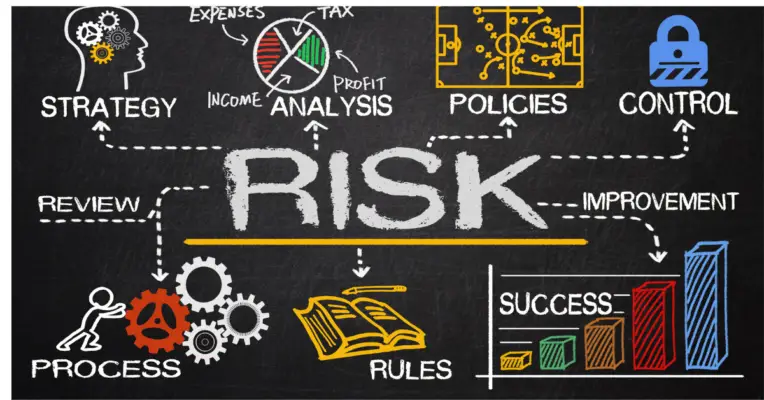Growth stocks, in particular, tend to be sensitive to changes in these variables and often underperform during rising rates and inflation. Inflation and interest rates are crucial economic indicators that significantly impact the performance of various asset classes, including stocks. Various reasons cause this, examples are the following:-
Increased Borrowing Costs: Higher interest rates increase the cost of borrowing, making it more expensive for companies (especially growth-oriented companies that often rely on debt to finance their expansion) to raise capital. This can slow their growth and reduce profitability, lowering stock prices.
Discounted Cash Flow (DCF) Valuation: Analysts often use discounted cash flow (DCF) when valuing companies. This method estimates the value of a company based on its future cash flows, discounted back to the present using an appropriate discount rate.
When interest rates rise, the discount rate used in DCF models also rises, lowering future cash flows’ present value. This reduces the calculated value of the company, making its stocks less attractive.
Investor Risk Appetite: Higher interest rates often decrease investor risk appetite. This is because safer investments (like bonds) become more attractive as their yields rise with interest rates.
Since growth stocks are often considered riskier, investors may shift their portfolios away from growth stocks and towards safer, higher-yielding investments when rates rise.
Future Earnings Expectations: Growth stocks are often valued based on expectations of future earnings growth.
If investors expect higher interest rates to slow the economy and reduce future earnings growth, this can decrease the value of growth stocks.
Inflation Concerns: Rising interest rates often indicate that central banks are trying to curb inflation. If inflation expectations are high, the real returns of all investments could be negatively impacted.
Still, growth stocks might be particularly affected as their future profits would be worth less in real terms.
Understanding the reasons behind this phenomenon is critical for investors seeking to navigate market fluctuations and optimize their portfolios. This article explores the relationship between growth stocks and interest rates by examining factors such as impacts on company profits, investor preferences during volatile economic times, and how these factors affect equity markets.
Understanding the dynamics of this relationship, investors can make more informed decisions about investment strategies to help them mitigate risks associated with changing interest rates and inflation levels.
Thus, a comprehensive understanding of why growth stocks underperform when rates rise can aid investors in building a resilient portfolio that can weather market volatility while maximizing returns over time.

Interest Rates and Inflation Influences
The impact of rising interest rates and inflation on shares, particularly growth shares, has been discussed extensively in the pre-existing knowledge. These factors can significantly affect company profits, as higher costs and lower sales can squeeze profit margins and lead to falling share prices.
Inflationary pressures are particularly harmful to growth stocks that rely heavily on future earnings expectations.
Rising interest rates and inflation through higher mortgage or credit card repayments may also impact consumers. Government policies to curb inflation can include raising tax rates or reducing spending on new projects and social enterprises.
Retirees are especially vulnerable to the negative effects of high inflation and rising interest rates, as they often rely on fixed incomes.
In addition to domestic factors, global economic outlooks can also impact the performance of growth stocks when interest rates rise.
For example, a stronger US dollar due to higher interest rate differentials between countries could make commodities more expensive for consumers in emerging markets, reducing demand for goods produced by growth companies in developed economies.
As such, it is important for investors to carefully consider all relevant economic factors when assessing the performance of growth stocks during rising interest rates and inflationary pressures.
Impacts on Companies
Impacts on companies during periods of increasing interest rates and inflation can be significant, particularly for highly leveraged firms with unstable revenue streams.
Rising interest rates make it more expensive for companies to service their debts, leading to a struggle to stay afloat for businesses with high debt levels.
Additionally, higher costs and fewer sales due to inflationary pressure can squeeze profit margins, often resulting in falling share prices and even business collapses.
The impacts of rising interest rates and inflation are not limited to companies’ financial stability but also affect consumer spending. Higher interest payments on loans reduce household disposable income, resulting in lower consumer spending.
Moreover, the market volatility of these economic conditions can further discourage consumers from investing or spending money altogether.
Company valuations are another area impacted by rising interest rates and inflation. As investors shift their focus from growth shares towards value shares during high inflation, highly leveraged growth-oriented firms tend to underperform compared to well-established value-oriented companies with stable fundamentals that pay consistent dividends.
Furthermore, as investors demand higher returns on investments due to increased risk perception caused by market volatility, company valuations tend to decline along with stock prices. Consequently, profitability is heavily impacted as businesses face challenges raising funds through equity issuance or debt financing amidst declining valuations.
| Area | Impact |
|---|---|
| Profitability | Squeezed profit margins due to higher costs and fewer sales |
| Debt servicing | More expensive for highly-leveraged firms; may struggle financially |
| Consumer spending | Reduced disposable income leads to lower consumer spending levels |
| Company valuations | More expensive for highly-leveraged firms, which may struggle financially |
Impact on Equity Markets
Equity markets face significant challenges during rising interest rates and inflation as market volatility increases and investors shift their focus from growth-oriented to value-oriented companies.
Rising rates make it more expensive for companies to service their debts, causing highly leveraged businesses to struggle to stay afloat. This can lead to economic contraction as households and companies restrict spending.
Investor behaviour is also affected by global factors such as inflation and interest rates. Higher interest rates reduce stock valuations, especially for high-growth companies.
Multiple investors are willing to pay for a company’s earnings declines when inflation or interest rates rise, making bonds more attractive relative to equities. Companies with high debt levels are particularly exposed to higher interest rates, which can reduce profits and economic activity.
In response to these challenges, investors often switch focus from growth stocks to value stocks during high inflation and rising interest rates. Value shares are well-established companies with good fundamentals that pay consistent, regular dividends and are considered safe-haven assets when risk is high.
The prices of growth shares tend to tumble when inflation is high, but value shares often hold up well.
While changes in interest rates do not consistently translate into outperformance or underperformance between the two categories of companies, current valuation disparities suggest that value is likely to continue outperforming in the near future.
This might be partly because they have less exposure than growth shares toward higher borrowing costs associated with an increase in the cash rate set by central banks like the Reserve Bank of Australia (RBA).
Value vs. Growth Stocks
Investors are presented with a complex and evolving situation when trading value versus growth stocks in response to changing economic variables such as inflation and interest rates.
Historically, growth stocks have outperformed value stocks due to their potential for higher earnings growth, but this dynamic can shift during rising interest rates. When interest rates increase, borrowing money costs rise, making it more difficult for companies to finance future growth plans.
This makes high-growth companies less attractive to investors who are seeking steady returns.
The duration argument may also influence rotation drivers between value and growth stocks. The assumption is that growth stocks have longer duration because they typically rely on future cash flows far into the future, which means they are more sensitive to changes in discount rates.
However, this theory has not consistently translated into outperformance or underperformance between these equities.
Despite these uncertainties, valuation disparity remains a key consideration when deciding whether to invest in value or growth stocks.
Generally, value shares tend to be well-established companies with good fundamentals that pay consistent dividends and are considered safe-haven assets when risk is high.
Growth shares tend to be highly leveraged junior companies with less stable revenue streams that offer greater potential for capital appreciation but also come with greater risk.
As such, investors should carefully consider their investment objectives and risk tolerance before deciding which type of equity is right for them in light of changing economic variables like bond yields and other economic variables.
Investment Considerations
Long-term strategy, risk management, market analysis, diversification techniques, and portfolio optimization are all critical components in creating a successful investment plan resilient to fluctuations in economic conditions.
Investors can protect themselves from the adverse effects of rising interest rates and inflation by diversifying their portfolios across different asset classes, such as bonds and equities. Risk management should be a key consideration when investing during periods of uncertainty.
Investors should focus on companies with strong fundamentals that pay consistent dividends over time. This approach involves selecting stocks based on an individual company’s earnings growth rate rather than its price-to-earnings ratio or other valuation metrics.
Diversification techniques such as investing in exchange-traded funds (ETFs) or mutual funds can also help spread risk across multiple asset classes.
Finally, investors must engage in ongoing market analysis to identify emerging trends and opportunities. A clear understanding of how macroeconomic factors like inflation and interest rates will impact different sectors of the economy is essential for making informed investment decisions.
Adopting a long-term strategy that focuses on risk management, diversification techniques, and ongoing market analysis, investors can create portfolios well-positioned to weather fluctuations in economic conditions while delivering solid returns over time.

Frequently Asked Questions
How do rising interest rates and inflation impact the housing market?
Rising interest rates and inflation can increase mortgage rates, making it more expensive to purchase a home. This may lead to decreased demand for real estate and lower property values. Homeownership costs may also rise, affecting affordability for homeowners.
What actions can households take to mitigate the impact of rising interest rates?
To mitigate the impact of rising interest rates, households can consider budgeting strategies, debt consolidation, savings plans, and refinancing options. Investing opportunities should also be explored to maximize potential returns.
Do rising interest rates and inflation less impact any sectors or industries?
The Technology stocks, Energy sector, Consumer staples, Healthcare industry and Financial services are usually less impacted by rising interest rates and inflation.
However, it is essential to consider individual company fundamentals and potential market disruptions when making investment decisions.
How do central banks and governments work together to maintain steady economic growth?
Central banks and governments use monetary and fiscal policies to maintain economic stability. They work together by adjusting interest rate channels, implementing fiscal stimulus, and monitoring macroeconomic indicators to ensure steady growth while keeping inflation within a target range.
What are some potential long-term effects of sustained high inflation and interest rates on the economy?
Sustained high levels of inflation and interest rates can lead to economic growth challenges, impacting consumer spending habits and increasing unemployment rates. Fiscal policy decisions and investment strategies may need to be adjusted to mitigate these effects.

Conclusion
Interest rates and inflation are critical economic factors that can impact the performance of various asset classes, including growth stocks. As interest rates rise and inflation increases, growth stocks tend to underperform due to reduced profitability expectations for companies and investor preferences shifting towards more defensive sectors.
This phenomenon highlights the importance of understanding the dynamics of different investment strategies in relation to macroeconomic variables.
Investors seeking to optimize their portfolios during rising rates and inflation periods should consider diversifying their holdings across a range of asset classes, including value stocks and defensive sectors such as utilities or consumer staples.
Additionally, monitoring changes in economic indicators and staying informed about market trends can help investors make informed decisions about when to adjust their investments.

Chris Ekai is a Risk Management expert with over 10 years of experience in the field. He has a Master’s(MSc) degree in Risk Management from University of Portsmouth and is a CPA and Finance professional. He currently works as a Content Manager at Risk Publishing, writing about Enterprise Risk Management, Business Continuity Management and Project Management.

